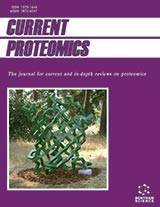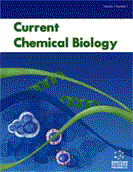Abstract
miRNAs are a new class of non-coding small RNAs that exist in many species. They play important roles in many physiological and pathophysiological processes by inhibiting the expression of target RNAs. Recent advances in miRNAs are beginning to be predicted and identified using several technological approaches, such as miRNA cloning, hybridization with various probes, and PCR-based detection. In the past few years, miRNA microarray technology has become the reference technique for monitoring the miRNA expression. In this review, miRNAs will be introduced and the characteristics of normalization methods in miRNA research will be discussed. The technical operations of miRNA profiling with microarrays will also be described, with an emphasis on probe design and labelling. The applications of the miRNA microarray in both basic and applied research will be summarized.
Keywords: miRNAs, profiling, technology, microarray
Current Bioinformatics
Title: miRNA Microarray Technology in miRNA Profiling
Volume: 4 Issue: 2
Author(s): Shu-Ting Wang, Cai Li and Lei Liu
Affiliation:
Keywords: miRNAs, profiling, technology, microarray
Abstract: miRNAs are a new class of non-coding small RNAs that exist in many species. They play important roles in many physiological and pathophysiological processes by inhibiting the expression of target RNAs. Recent advances in miRNAs are beginning to be predicted and identified using several technological approaches, such as miRNA cloning, hybridization with various probes, and PCR-based detection. In the past few years, miRNA microarray technology has become the reference technique for monitoring the miRNA expression. In this review, miRNAs will be introduced and the characteristics of normalization methods in miRNA research will be discussed. The technical operations of miRNA profiling with microarrays will also be described, with an emphasis on probe design and labelling. The applications of the miRNA microarray in both basic and applied research will be summarized.
Export Options
About this article
Cite this article as:
Wang Shu-Ting, Li Cai and Liu Lei, miRNA Microarray Technology in miRNA Profiling, Current Bioinformatics 2009; 4 (2) . https://dx.doi.org/10.2174/157489309788184783
| DOI https://dx.doi.org/10.2174/157489309788184783 |
Print ISSN 1574-8936 |
| Publisher Name Bentham Science Publisher |
Online ISSN 2212-392X |
 7
7
- Author Guidelines
- Bentham Author Support Services (BASS)
- Graphical Abstracts
- Fabricating and Stating False Information
- Research Misconduct
- Post Publication Discussions and Corrections
- Publishing Ethics and Rectitude
- Increase Visibility of Your Article
- Archiving Policies
- Peer Review Workflow
- Order Your Article Before Print
- Promote Your Article
- Manuscript Transfer Facility
- Editorial Policies
- Allegations from Whistleblowers
Related Articles
-
Across the Universe of K-Ras Mutations in Non-Small-Cell-Lung Cancer
Current Pharmaceutical Design The Crosstalk of RAS with the TGF-β Family During Carcinoma Progression and its Implications for Targeted Cancer Therapy
Current Cancer Drug Targets Evolution of Ipsilateral Head and Neck Radiotherapy
Current Cancer Therapy Reviews Significance of Various Experimental Models and Assay Techniques in Cancer Diagnosis
Mini-Reviews in Medicinal Chemistry Ciprofloxacin Stress Proteome of the Extended-Spectrum β-lactamase Producing Escherichia coli from Slaughtered Pigs
Current Proteomics Highly Selective MEK Inhibitors
Current Enzyme Inhibition Zebrafish: Predictive Model for Targeted Cancer Therapeutics from Nature
Current Cancer Drug Targets Etoposide, Topoisomerase II and Cancer
Current Medicinal Chemistry - Anti-Cancer Agents Computer-Aided Detection System for the Classification of Non-Small Cell Lung Lesions using SVM
Current Computer-Aided Drug Design RETRACTED: Aberrant Sialylation in Cancer Pathology and Metastasis, a Putative Drug Target Candidate
Anti-Cancer Agents in Medicinal Chemistry Herpes Simplex Virus Type 1 Amplicons and their Hybrid Virus Partners, EBV, AAV, and Retrovirus
Current Gene Therapy Overview of Dietary Influences on Atherosclerotic Vascular Disease:Epidemiology and Prevention
Cardiovascular & Hematological Disorders-Drug Targets The NK-1 Receptor is Involved in the Antitumoural Action of L-733,060 and in the Mitogenic Action of Substance P on Human Pancreatic Cancer Cell Lines
Letters in Drug Design & Discovery Adiponectin in Asthma: Implications for Phenotyping
Current Protein & Peptide Science The ErbB Receptors and their Ligands in Cancer: An Overview
Current Drug Targets Coronary Angiography Using Noninvasive Imaging Techniques of Cardiac CT and MRI
Current Cardiology Reviews Dihidro-β-Agarofuran Sesquiterpenes: A New Class of Reversal Agents of the Multidrug Resistance Phenotype Mediated by P-Glycoprotein in the Protozoan Parasite Leishmania
Current Pharmaceutical Design Effect of Drugs in Cells and Tissues by NMR Spectroscopy
Current Topics in Medicinal Chemistry Photodynamic Therapy For Non-Melanoma Skin Cancers
Current Cancer Therapy Reviews Oligonucleotide Aptamers for Glioma Targeting: An Update
Central Nervous System Agents in Medicinal Chemistry

















.jpeg)








